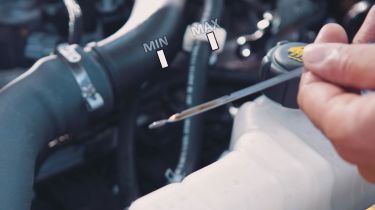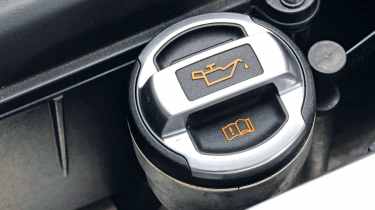How to check and top up your engine oil
Checking your engine oil is a vital part of car ownership – here’s the easiest way to do it

Anyone who drives a car with a petrol or diesel engine will need to check their engine oil at some point. It’s easy to do yourself and only takes a few minutes – we’ll cover the basic steps in this guide.
Engine oil is used to lubricate the moving parts within the engine, helping everything to run smoothly. Over time, some oil can burn off – or leak out in some cases – so it needs to be topped up occasionally. If you ignore your car’s oil level for a long period of time, you run the risk of driving without enough engine oil – something that can lead to irreparable damage.
 Car maintenance: the DIY essentials for looking after your car
Car maintenance: the DIY essentials for looking after your car
Don’t feel daunted by the prospect of checking or topping up your oil as it’s a simple process. It’s especially important to check your oil before heading off on a long drive, as it’s paramount that the engine is well-oiled to run smoothly for an extended period of time.
When you check the oil you want to make sure it looks in good condition and that there’s enough of it. Here’s our guide to checking your engine oil and topping it up when it’s low.
How to check your car’s engine oil
Firstly, get some kitchen roll or a clean piece of cloth ready. Make sure your car is parked on a level, flat surface and that the engine is cool. You shouldn’t check your oil level when the engine is hot as the oil will have expanded due to the heat – this will give an inaccurate reading, plus you’ll be at greater risk of burning yourself on something hot under the bonnet. Make sure your car has been sitting turned off for at least 10 minutes – this will also allow the oil in the engine to drain to the pan, allowing for a more accurate reading.
Open the bonnet and locate the car’s dipstick – this is usually a long, thin piece of metal with a yellow or orange handle. It should be easily accessible and close to the top of the engine.
Gently pull out the dipstick, while taking care not to flick oil over the engine or yourself – it could still be hot. Wipe it clean with the kitchen roll or cloth, then replace it – this is to give you a clean level reading. Pull it out one more time.
The dipstick will have minimum and maximum marks on the end. A healthy engine should have oil on the dipstick at a point between the two – preferably towards maximum.
Check the colour of the oil. It should be a golden, caramel colour in a petrol or diesel car – if it’s dark or black, it’s getting old so consider getting an oil change.
Once you’ve checked the oil, reinsert the dipstick and ensure it’s firmly inserted back in the engine.
How to top up your engine oil
If you’ve checked your car’s oil level and it appears to be low, you can top it up yourself. It’s crucial you use the correct oil for your engine. Your local dealer or car spares shop will be able to supply you with the best oil for your car. Your car’s handbook may also state the correct oil to use.

Topping up is simple. Ensuring the engine is cool, unscrew the oil cap which will be located on top of your engine and usually labelled ‘oil’ or marked with an oil can symbol. If you’re unsure, speak to your local dealer or check your car’s handbook.
Using a funnel, pour in a small amount of oil, giving it time to drain into the engine. Check the dipstick for the level. Need more? Repeat the process, remembering to add small amounts and then checking the dipstick each time.
Take care not to overfill – too much oil can be just as bad as too little, and could result in engine damage.
How often should you top up your engine oil?
You should check your car’s oil at least once a month and before long drives. Check it has the right amount and that it’s not too dark in colour if your car has a petrol engine. You should top up the oil when needed, but every car has different service intervals for when it needs an oil change. You should check your car’s manual to see when it’s due for a complete change, along with the oil filter.
Frequently Asked Questions
Generally, it’s best practice to check your car’s engine oil level when the engine is cold. You’ll get a more accurate reading if the car has been sitting because the oil will have had time to drain to the oil pan. Also, hot oil expands which can affect the accuracy of the reading.
Check out our guide on how to perform an oil and filter change on your car.
Car care made simple
Recommended

Classic car tax exemption: which historic vehicles qualify?
Most Popular

New Smart #5 Brabus is a 637bhp far cry from the brand’s city car past

Best car leasing deals 2025: this week’s top PCH offers
Tips & advice

Car dashboard warning lights: what does each symbol mean?

Electric car charging stations: public networks, charger types, apps and maps










